Laurentian Reviews
Winter 2006
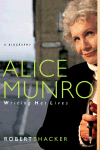 Alice Munro: Writing Her Lives, By Robert Thacker (McClelland & Stewart
Ltd., 2005)
Alice Munro: Writing Her Lives, By Robert Thacker (McClelland & Stewart
Ltd., 2005)
A new biography of acclaimed author Alice Munro, by Professor of Canadian
Studies and Molson Research Fellow Robert W. Thacker, is the first
such volume that has received Munro's cooperation. Alice Munro: Writing
Her Lives was published in November by McClelland & Stewart
Ltd., Toronto, who calls it "the book about one of
the world's great authors, which shows how her life and her stories intertwine."
The publishers state, "For almost 30 years, Thacker has been researching
this book, steeping himself in Munro's life and work, working
with her cooperation to make it complete. The result is a feast of information
for Alice Munro's admirers everywhere. By following 'the parallel tracks'
of Munro's life and Munro's texts, he gives a thorough and revealing account
of both her life and work."
Thacker is the editor of The Rest of
the Story: Critical Essays on Alice Munro (1999). He received the
2003 Edith and Delbert Wylder Award from the Western Literature
Association and is a former editor of The
American Review of Canadian Studies. Thacker was awarded a grant from
the Canadian Embassy in Washington, D.C., to support research
on the Munro biography, as well as the Molson Fellowship, funded
by a gift from Eric Molson, chairman of Molson Inc., and his
wife, Jane Molson, of Montreal, through the Lincolnshire Foundation. They
are the parents of new St. Lawrence Trustee Geoffrey Molson ’92.
Widely
regarded as among the best contemporary writers of short stories
in English, Munro has published a novel, Lives of Girls and
Women (1971), and numerous the short story collections. Since the
1970s, Munro's stories have appeared frequently in periodicals
such as The
Paris Review, Atlantic Monthly and, especially, The New
Yorker.
A review of Alice Munro: Writing Her Lives in the
December Quill & Quire states
that Thacker provides "an extraordinary wealth of detail on Munro's
progress as a writer," and that he "brings together much illustrating
commentary on what Munro does and how she does it." --MD
The Roots of Desire: The Myth, Meaning and Power of Red Hair,
by Marion Roach '77 (Bloomsbury USA, 2005)
A new book described
as "part history, part cultural commentary, part
memoir" by Trustee Marion Roach '77 explores the role that redheads
have held in society.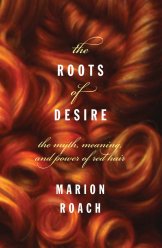 The
Roots of Desire: The Myth, Meaning and Power of Red Hair was published
by Bloomsbury USA last July.
The
Roots of Desire: The Myth, Meaning and Power of Red Hair was published
by Bloomsbury USA last July.
According to the publisher, "A redhead
rarely goes unnoticed in a crowded room. From Judas Iscariot
to Botticelli’s
Venus to Julianne Moore, redheads have been worshipped, idealized,
fetishized, feared and condemned, leaving their mark on us and our culture.
Such is the power of what is actually a genetic mutation, and
in The
Roots of Desire,
Roach takes a fascinating look at the science behind hair color
and the roles redheads have played over time."
Among the tidbits revealed:
in Greek mythology, redheads become vampires after they die;
Hitler banned intermarriage with redheads for fear of producing “deviant offspring”;
women with red hair were burned as witches during the Inquisition; in Hollywood,
female redheads are considered sexy while male redheads are considered
a hard sell; and in the 19th century, it was popular belief that redheads
were the strongest-scented of all women, smelling of amber and violets.
Roach is also the author of Another Name for Madness, a memoir of her family’s struggle with her mother’s Alzheimer’s disease, and the co-author of Dead Reckoning: The New Science of Catching Killers. A commentator on National Public Radio’s "All Things Considered," she has been published in the New York Times Magazine, Prevention, Vogue, Newsday, Good Housekeeping, Discover and American Health. Roach's St. Lawrence degree is in government; she studied in Kenya through the University's program there. Roach also teaches a memoir course at the Arts Center of the Capital Region. She was guest on "Martha," Martha Stewart's daytime television show, in September.
--MD
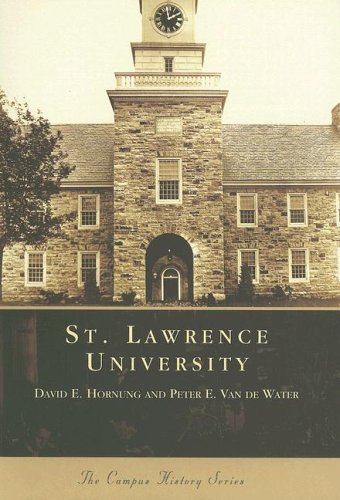 St. Lawrence University, by Dana Professor of Biology
David Hornung and Peter Van de Water ’58 (Arcadia Publishing,
2005) and State University of New York at Canton by
Douglas Welch (Arcadia Publishing, 2005)
St. Lawrence University, by Dana Professor of Biology
David Hornung and Peter Van de Water ’58 (Arcadia Publishing,
2005) and State University of New York at Canton by
Douglas Welch (Arcadia Publishing, 2005)
A chronological conjunction has caused St. Lawrence to celebrate
its sesquicentennial and SUNY Canton its centennial at the
same time. Both have noted the occasion with books in
Arcadia Publishing’s Campus History Series of books that
consist largely of old photographs with brief captions. The
St. Lawrence volume has sections on the campus, academic programs,
campus life, athletics, Greeks, other campus organizations
and the village of Canton.
A perusal will bring back memories
to alumni of many eras: images include Herring-Cole when it
was a library, the Gaines Open Air Greek Theater, Marie Curie
when she dedicated Hepburn Hall, Vetsville, Laurentian Hall,
Ward Priest’s lab,
Professors Romer and Bloomer, Kirk Douglas ’39 in a Mummers
play, Winter Carnival snow sculptures, the Canton Creeper,
Vietnam War protests, women’s archery and fencing teams,
outdoor hockey before Appleton Arena was built, the Beta fire
truck, Derby Day, the Banjo Club, the Navy V-12 unit, KSLU
and the Canton Town Hall/Opera House, where Commencements took
place. This is a march through time, showing how St. Lawrence
progressed into the institution it has become today.
What is
now SUNY Canton was for many years part of St. Lawrence, known
affectionately as “the Ag School.” SUNY Canton librarian and local rare book
dealer Douglas Welch has followed the Arcadia formula. One thing that comes
through is the school’s affiliation with St. Lawrence, starting with
the cover photo of Cook Hall, which came to St. Lawrence with other buildings
when the agricultural college built a new campus across town in the 1960s and
is today Piskor Hall. Aerial photos show that professors were teaching animal
husbandry and how to grow hybrid corn where St. Lawrence is now building a
$37 million science education complex. --NSB
 The Lake,
the River & the Other Lake, by
Steve Amick ’86 (Pantheon Books, 2005).
The Lake,
the River & the Other Lake, by
Steve Amick ’86 (Pantheon Books, 2005).
This may be the only book you’ll ever come across that
has a Helpee-Selfee Laundromat (along with a lot of other small-town
things) on the cover, which the multi-talented Steve Amick
created. There are some other similarities to Canton in Weneshkeen,
Michigan, a fictional resort town he invented for his first
novel. “Weneshkeen,” which he places on the shore
of Lake Michigan, means “who are you?” in Ojibwe,
and Amick probes the notion of identity throughout the book,
as well as the relationship between identity and place.
The
book has gotten lots of favorable press, with Publisher’s
Weekly calling
it “a smalltown soap opera, burning and churning through the summer of
2001”; Kirkus Reviews says it’s “fond, wise and
thoroughly enjoyable.”
Weneshkeen is peopled by summer people and other tourists (“Fudgies”),
townies, migrant workers, a porn-addicted retired minister,
a bigot whose kids marry foreigners, and, primarily, a no-nonsense
Ojibwe veteran of Vietnam who hates the noise of jet skis.
They all have their good points, and their bad – in
other words, they’re human. There’s some
Keillor-like humor in all of this, but it’s a little
darker – not everyone’s kids are above average.
Michigan
native Amick has an MFA in Creative Writing from George Mason
University. A college instructor, playwright, advertising copyrighter,
songwriter and musician, he has published several short stories.
He continues to live in Michigan. --NSB
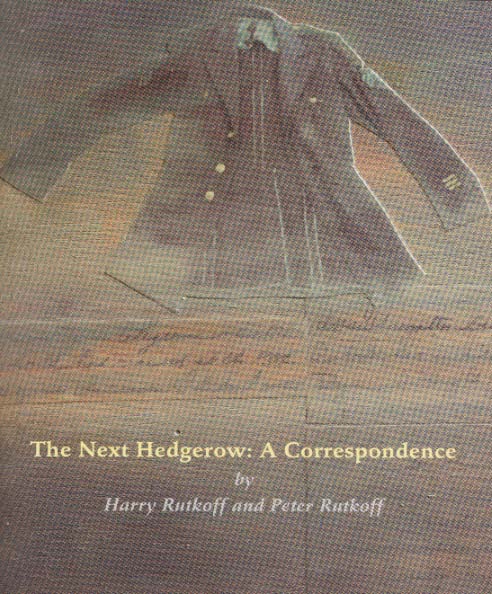 The Next Hedgerow: A Correspondence,
by Peter Rutkoff ’64
and Harry Rutkoff
The Next Hedgerow: A Correspondence,
by Peter Rutkoff ’64
and Harry Rutkoff
(xoxox Press, 2004).
Peter Rutkoff ’64, professor of American studies
at Kenyon College, talks about this book this way: “He
died, my father, when I was seven and he thirty-nine. It took
five years from the time he was wounded, terribly wounded,
in the fields of France, in the fierce hedgerow fighting, till
the dark winter night they told me that he had died. Years—decades—later,
a brown, brittle cardboard folder, marled and scarred, opened
to reveal a packet of onion skin paper. There it was—three
stories and a poem, all written by my father—his legacy
lying asleep on a dusty shelf in an attic in New Jersey, now
in my hands, his voice.”
Rutkoff's father died when Peter was a child, so the memories
are faint. In 1949, Harry Rutkoff succumbed to wartime wounds,
having been machine-gunned on a battlefield in France five
years before. Peter's yearning was always for his father's
voice—as he says in his introduction, he could never
quite bring back the timbre of it, the sense of a soul there,
speaking to him.
But with his father's wartime stories, found
years later, Peter had more to go on. They comprise a thread
of Harry's experience and attentions, as slender as life can
be. And in correspondence here is Peter's own story, rich remembrances
of young eyes, finding the father that life would bring him.
This is a poignant tale of the search for one’s own identity,
for one’s
roots.
 You Can’t
Win a Fight with Your Boss, And
55 Other Rules for Success, by Tom Markert ’81
(HarperCollins, 2005)
You Can’t
Win a Fight with Your Boss, And
55 Other Rules for Success, by Tom Markert ’81
(HarperCollins, 2005)
College cannot completely prepare anyone for what it takes
to succeed in the corporate environment. Office demands
and corporate politics are often difficult to decipher because
they are learned only from experience. Now, top ACNielsen
executive Tom Markert ’81 has finally assembled these
unwritten rules in a book meant to guide readers through every
challenge of the corporate game. You Can’t
Win a Fight with Your Boss clearly advises employees on
how to ascend the corporate ladder, without having to give
up on their personal morals and ethics. Understanding
that a sense of humor is a key element in managing the stress
of a job, Markert writes his short nuggets of advice in an
energetic and inspiring tone that will motivate any employee
to perform better in the office.
Markert’s concise one-
to two-page rules are practical advice for both recent graduates
and seasoned executives. Employees
new to the corporate world will want to focus on rules such
as “Put in the Hours,” “Become an Expert” and “Find
a Mentor.”
While much of Markert’s book focuses
on those who are green, some of his tongue-in-cheek style of
advice is geared toward middle managers and executives. Markert’s
book also includes chapters on ways to “Take Care of
Your Best People,” “Surround Yourself with Talent” and “Hire
Right, Fire Fast.”
Markert notes that business ethics and corporate responsibility
issues have headlined nationwide newspapers, from the collapse
of Enron to the investigations at Worldcom. The “Do
It by the Book” rule states simply that “honesty,
integrity, and ethics are a vital part of business and life. Never
be tempted by an ‘opportunity’ that might cause
a breach in these areas in your own chase for personal gain
or record profits.” The direct and to-the-point
advice stresses that there is no flexibility to these rules.
An
English major at St. Lawrence, as well as a member of Beta
Theta Pi fraternity and the basketball team, Markert is global
chief marketing and client service officer with ACNielsen in
New York. He has held leadership positions at Citicorp and
Procter & Gamble and has held positions on the board of
directors of the Australian professional basketball team the
Sydney Kings and the American Chamber of Commerce in New South
Wales.
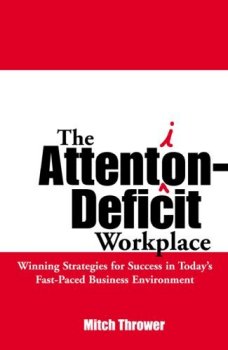 The Attention-Deficit Workplace: Winning Strategies for
Success in Today's Fast-Paced Business Environment,
by Mitch Thrower '90 (The Lyons Press, 2005).
The Attention-Deficit Workplace: Winning Strategies for
Success in Today's Fast-Paced Business Environment,
by Mitch Thrower '90 (The Lyons Press, 2005).
A new book by a Class of 1990 alumnus has received praise
from one of the authors of the enormously popular "Chicken
Soup for the..." series. The
Attention-Deficit Workplace: Winning Strategies for Success
in Today's Fast-Paced Business Environment, by Mitch Thrower
'90, was chosen as Book of the Week recently in Tom Hill's "Eaglezine" electronic
newsletter. Hill stated that Thrower "takes readers on
a breezy, insightful journey filled with lessons on how to
successfully navigate the attention-deficit maze that is so
familiar in today's workplace."
Thrower, a self-described "serial
entreprenuer," has
completed 13 Ironman triathlons and started several successful
businesses. His book's chapters include:


 Alice Munro: Writing Her Lives, By Robert Thacker (
Alice Munro: Writing Her Lives, By Robert Thacker ( The
Roots of Desire: The Myth, Meaning and Power of Red Hair was published
by Bloomsbury USA last July.
The
Roots of Desire: The Myth, Meaning and Power of Red Hair was published
by Bloomsbury USA last July.  St. Lawrence University, by Dana Professor of Biology
David Hornung and Peter Van de Water ’58 (Arcadia Publishing,
2005) and State University of New York at Canton by
Douglas Welch (Arcadia Publishing, 2005)
St. Lawrence University, by Dana Professor of Biology
David Hornung and Peter Van de Water ’58 (Arcadia Publishing,
2005) and State University of New York at Canton by
Douglas Welch (Arcadia Publishing, 2005) The Lake,
the River & the Other Lake, by
Steve Amick ’86 (Pantheon Books, 2005).
The Lake,
the River & the Other Lake, by
Steve Amick ’86 (Pantheon Books, 2005). The Next Hedgerow: A Correspondence,
by Peter Rutkoff ’64
and Harry Rutkoff
The Next Hedgerow: A Correspondence,
by Peter Rutkoff ’64
and Harry Rutkoff
 The Attention-Deficit Workplace: Winning Strategies for
Success in Today's Fast-Paced Business Environment,
by Mitch Thrower '90 (The Lyons Press, 2005).
The Attention-Deficit Workplace: Winning Strategies for
Success in Today's Fast-Paced Business Environment,
by Mitch Thrower '90 (The Lyons Press, 2005).